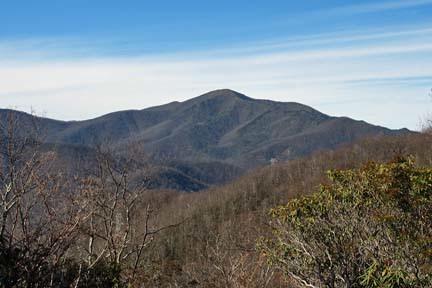Seventy-five years is a pretty good show of longevity, and shouldn't be treated lightly. It certainly isn't being overlooked at the Blue Ridge Parkway, where two symposiums are scheduled to celebrate the beautiful ribbon of highway that runs through the Appalachian Mountains.
The first, Imagining the Blue Ridge Parkway for the 21st Century: History, Scenery, Conservation and Community, will be held at Appalachian State University, Boone, North Carolina, on April 22-24. The second will be held in Roanoke, Virginia, in the fall.
"The symposium is an opportunity for the Blue Ridge Parkway, neighbors, and visitors to take a look back at where we've come from, but even more important to think about the future. How can we make sure the Parkway stays relevant for the next 75 years?" asks Superintendent Phil Francis.
The Blue Ridge Parkway, called "America's Favorite Ride," is the most-visited national park unit in the country, attracting almost 16 million visitors in 2009. "But we've had as many as 20 million in the past," Superintendent Francis points out. "We need to reconnect with people, especially young people. because they're the future of the Parkway. We need more involvement with our partners. I'm concerned that camping is down and picnicking is declining in some areas. And we get low visitation by children."
Neva Specht, associate dean of the College of Arts and Sciences at Appalachian State University and chair of the Blue Ridge Parkway Spring symposium committee, sees the symposium as a chance to present scientific, social, and cultural research about the Parkway in a public venue. And public is the key.
"The symposium will have something for every stakeholder such as academics, elected officials, general visitors, and students. Appalachian State has been connected with the Parkway for several years. We think students are really the next stewards for the Parkway," said Dean Specht. "By hosting on the university campus, we'll attract students so they can see what the Parkway means to them. In addition to presentations, there'll be movies, displays, even a 1930s camping demonstration."
Carolyn Ward of the Blue Ridge Parkway Foundation will present her work on the TRACKS Trail for children. She describes her program as "Dora the Explorer," a cartoon character, meets geocaching. "Park use has been declining, especially for children. This presentation came out of concern about the next 75 years of stewards," she said.
The first such track is at Mile Marker 384 on a trail built by the Carolina Mountain Club. See www.kidsinparks.com for details on the program
Also appearing at the symposium will be Philip E. Coyle, a professor of anthropology and sociology at Western Carolina University who studies the "missing voices" on the Parkway. His research shows that "all of the famous Parkway sites were fabricated, including Humpback Rocks Pioneer Farm group, the landscaping at Peaks of Otter, Mabry Mill, and basically every cultural or historical structure on the Parkway." Professor Coyle refers to Anne Whisnant's research on Peaks of Otter in her book, Super-Scenic Motorway: A Blue Ridge Parkway History.
According to Professor Coyle, "two good examples of ignored sites are the Saunders Cabin at Peaks of Otter and the Pine Spur Cemetery near Floyd, Virginia. Both are African-American associated cultural resources. Places that were destroyed by the National Park Service are almost too numerous to mention, as in most parks, but certainly include the home of Cherokee elder Jerry Wolfe."
One large group of stakeholders left out of the symposium, are hikers. There's no mention of the Mountains-to-Sea Trail, a trail that weaves in and out of Blue Ridge Parkway land in North Carolina from the time it leaves Great Smoky Mountains National Park until Stone Mountain State Park, over 300 miles later. When asked about this omission, Dean Specht said that when the call for papers was sent out no hiking-related speakers responded. They have a chance to rectify this omission at the fall symposium by acknowledging the Appalachian National Scenic Trail through Virginia.
For Superintendent Francis, it's all about stewardship, going back to the original mission of the National Park Service to preserve and protect the natural and cultural resources. He emphasizes that "how we protect the resources is not only the responsibility of the staff. We share that responsibility with the public."




Comments
Thanks for your coverage of the symposium, Danny. Hope to see you there!
I certainly hope those attending the symposium take some time to visit the nearby sections of the Parkway. I was up there on Saturday, and was amazed at the devastation still evident from the ice and wind of this past winter. There are places on the Parkway that will never be the same...trees uprooted, limbs hanging, entire hillsides where the treetops have broken off...makes clear-cutting look kind! Without continued financial support, the Parkway could soon be just another fire road!